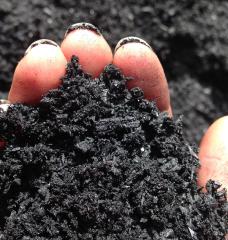
This story by ESI Journalism Fellow Nora Hertel was originally published for The St. Cloud Times, where it appears with additional photos and resources.
___________
By Nora Hertel
ST. AUGUSTA – Sunflowers bloomed between rows of corn because Daniel Janski ran out of cover crop seeds and grabbed a pollinator mix to fill in the rest of the field.
Four years ago, Daniel's brother introduced cover crops to the farm that has been in their family for four generations. Each year since, Daniel and his cousin Tyler Janski have learned more about regenerative agriculture and experimented with those practices on their 4,000 acres.
At first, Daniel thought his brother's idea sounded crazy.
"And you hear of older farmers that said, 'That's not something that works. People have done that in the past. They were unsuccessful,'" Daniel said about that first year with the cover crops. "And for us it was the complete opposite. … It was very successful."
Now the Janskis are using more cover crops across their land. They've reduced their tillage. And they allow their cattle to graze on some of their fields, which provides benefits to the land through the animals' hooves, saliva and manure.
Cover crops and reduced plowing are becoming more common in Minnesota and across the U.S., especially as carbon market brokers start to offer new incentives for practices that draw carbon dioxide from the air and lock it into the soil.
The science of soil carbon sequestration is still in development, but the benefits of soil health practices are often touted by farmers themselves and those practices are likely here to stay. Whether they lock in carbon credits or not, farming practices including the use of cover crops, limited tilling and grazing livestock on crop fields can provide benefits to soil, yields, water quality and biodiversity.
Soil health practices on the rise
"When I first started in 2005 I got almost no calls about cover crops, and now over half the calls I take are asking about cover crops," said Mark Lefebvre, conservation planner for the Stearns County Soil and Water Conservation District in Central Minnesota.






